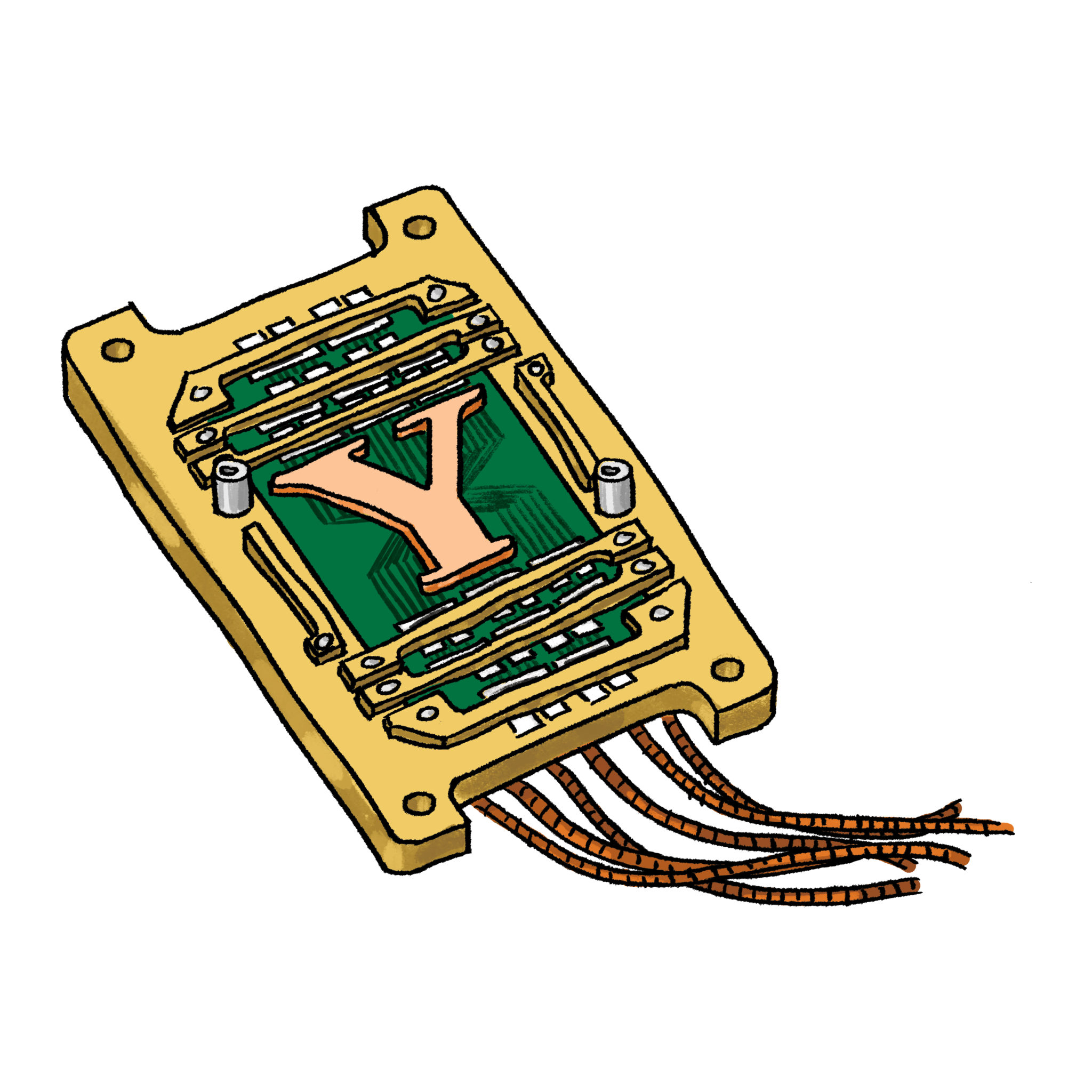Yale researchers achieve breakthrough in extending qubit’s lifetime above break-even point
Researchers at Yale have extended the lifetime of a qubit by 2.3 times, a major step in improving and proving the viability of quantum computers.

Yale Daily News
Since the beginning of the quantum revolution in the early 20th century, scientists have been working to prove the functionality of quantum computing.
While in theory the quantum computer is a powerful tool with the ability to encode calculations at speeds faster than those of a classical computer, the physical proof of principle has yet to be demonstrated. However, recent developments by Yale researchers in quantum error correction could represent a major step in proving the feasibility and potential of quantum computers.
A qubit, or quantum bit, is a unit of quantum information that is physically constructed of circuits made of superconductors and cooled to very low temperatures to optimize the circuits’ efficiency. Yale researchers in the Devoret research group have successfully extended the lifetime of a qubit beyond the break-even point, seeing a gain in the preservation of information and the amount of operations that can be performed on a qubit in one lifetime.
“We increased the lifetime by a factor of 2.3, so we more than doubled the number of operations that we can perform before the qubit begins to fail,” said Luigi Frunzio, a senior research scientist in applied physics.
With the help of machine learning to optimize calibration and precision, the researchers used quantum error correction — a process used to protect information encoded in qubits from errors due to quantum noise — to achieve this breakthrough.
According to Frunzio, using the Gottesman-Kitaev-Preskill quantum error correction code, the research group was the first to see more errors corrected than errors produced in quantum information. Before this breakthrough, he said, there were more errors than corrections from quantum error correction codes.
Steve Girvin, Yale’s Eugene Higgins professor of physics, noted that prior to this study, many research groups across the world had gotten close to the break-even point. According to Girvin, by incorporating the efforts of interdisciplinary research and an accumulation of progress from over the years, this breakthrough was finally the first to extend the qubit’s lifetime above the break-even point to see a gain greater than one.
Having a stable qubit above the break-even point shows that the theories behind quantum computing are plausible, according to Baptiste Royer, former postdoctoral student in the Devoret research group.
“One of the main claims is to show that it is possible to have a stable qubit above break-even at the heart of quantum error correction,” Royer said.
All sources the News spoke to noted that in addition to being a step towards building more functional quantum computers, the breakthrough is also a proof-of-principle demonstration that shows that researchers may eventually be able to build a quantum computer that provides an advantage beyond any modern supercomputer.
While there is still a long way to go before quantum computers can be as effective as classical computers in terms of functionality, according to Girvin, this breakthrough is an important first step to improving the practicality of quantum computers.
“This is a big step forward, though, there is still a huge distance to go to get a gain of millions or billions,” Girvin said. “But the journey to a billion begins with being above one. The grand challenge to solve is if quantum computers are going to be practical.”
With this goal in mind, all three researchers mentioned that the next advancement needed to further validate quantum error correction and the practicality of quantum computing is extending the lifetime of qubits to the scale of billions. Royer added that they are also working on extending this breakthrough to more than one qubit such that complex algorithms can be implemented in the quantum computers.
“With the feasibility of quantum error correction, better qubits and better machines altogether, quantum computation will not only be possible but also more concretely useful for disciplines beyond science and math,” Frunzio said.
The first quantum computer, a two-qubit with the ability to load and output data, was built in 1989.







